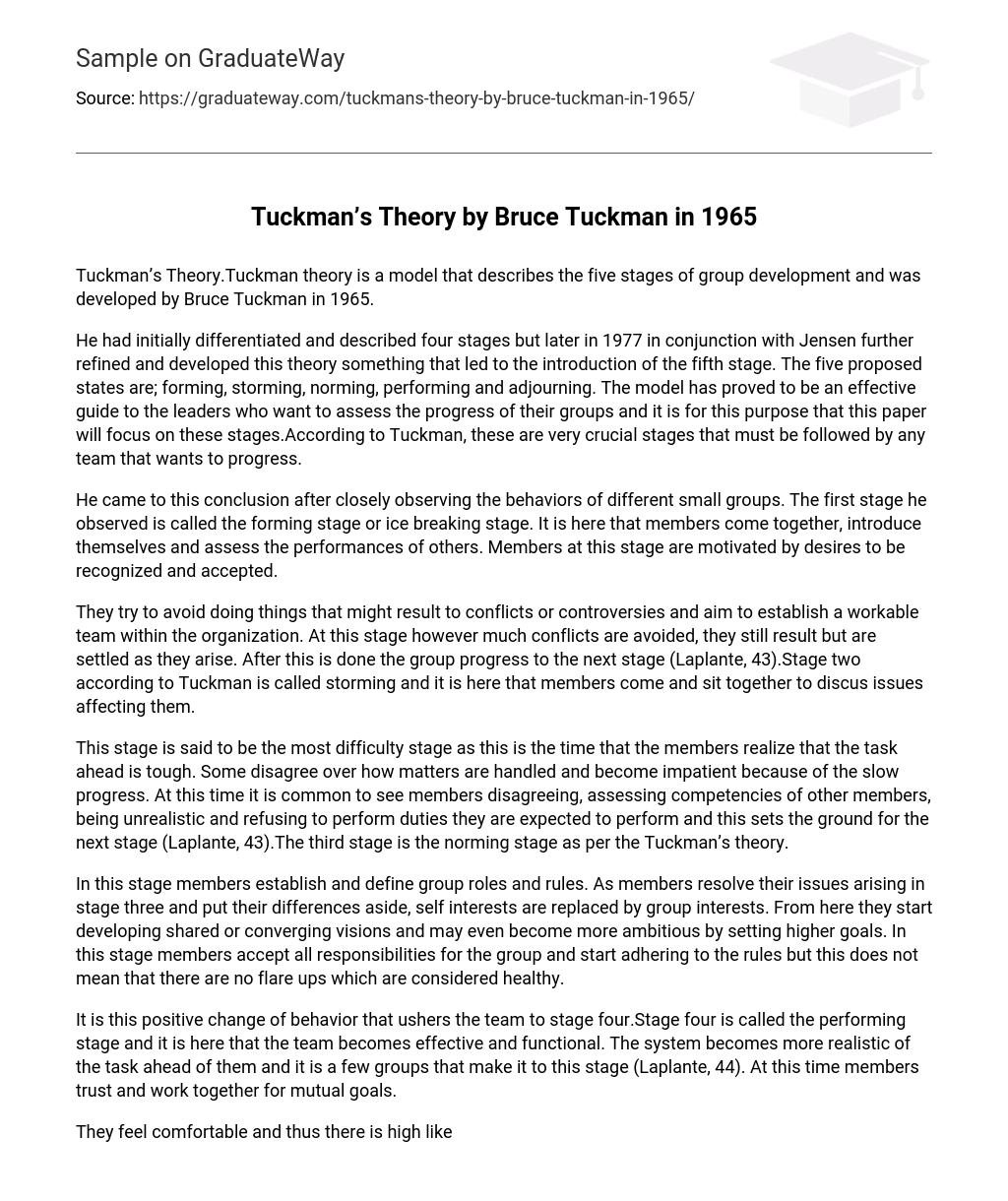Tuckman’s Theory.Tuckman theory is a model that describes the five stages of group development and was developed by Bruce Tuckman in 1965.
He had initially differentiated and described four stages but later in 1977 in conjunction with Jensen further refined and developed this theory something that led to the introduction of the fifth stage. The five proposed states are; forming, storming, norming, performing and adjourning. The model has proved to be an effective guide to the leaders who want to assess the progress of their groups and it is for this purpose that this paper will focus on these stages.According to Tuckman, these are very crucial stages that must be followed by any team that wants to progress.
He came to this conclusion after closely observing the behaviors of different small groups. The first stage he observed is called the forming stage or ice breaking stage. It is here that members come together, introduce themselves and assess the performances of others. Members at this stage are motivated by desires to be recognized and accepted.
They try to avoid doing things that might result to conflicts or controversies and aim to establish a workable team within the organization. At this stage however much conflicts are avoided, they still result but are settled as they arise. After this is done the group progress to the next stage (Laplante, 43).Stage two according to Tuckman is called storming and it is here that members come and sit together to discus issues affecting them.
This stage is said to be the most difficulty stage as this is the time that the members realize that the task ahead is tough. Some disagree over how matters are handled and become impatient because of the slow progress. At this time it is common to see members disagreeing, assessing competencies of other members, being unrealistic and refusing to perform duties they are expected to perform and this sets the ground for the next stage (Laplante, 43).The third stage is the norming stage as per the Tuckman’s theory.
In this stage members establish and define group roles and rules. As members resolve their issues arising in stage three and put their differences aside, self interests are replaced by group interests. From here they start developing shared or converging visions and may even become more ambitious by setting higher goals. In this stage members accept all responsibilities for the group and start adhering to the rules but this does not mean that there are no flare ups which are considered healthy.
It is this positive change of behavior that ushers the team to stage four.Stage four is called the performing stage and it is here that the team becomes effective and functional. The system becomes more realistic of the task ahead of them and it is a few groups that make it to this stage (Laplante, 44). At this time members trust and work together for mutual goals.
They feel comfortable and thus there is high likelihood of goals achievement.The fifth and the final stage and is called the adjourning stage. This is the completion stage of the tasks started and that is why it is also called the disengagement stage. At this stage some members feel a sense of loss as some members might move apart after successful completion of the project and that is why it is also sometimes referred to as the mourning stage.
(Laplante, 45-46).Indeed the stages to a successful group are five namely formation, storming, norming, performing and adjourning stage which is the final stage as per the Tuckman’s theory. The stages are prerequisite to a successful group and thus must all be followed. The stages follow each other in a certain order thereby making the movement from one stage to the other a process.
Work Cited:Laplante, P.A. and Neill, C. J.
Antipatterns: Identification, Refactoring, and Management. CRC Press, 2006





